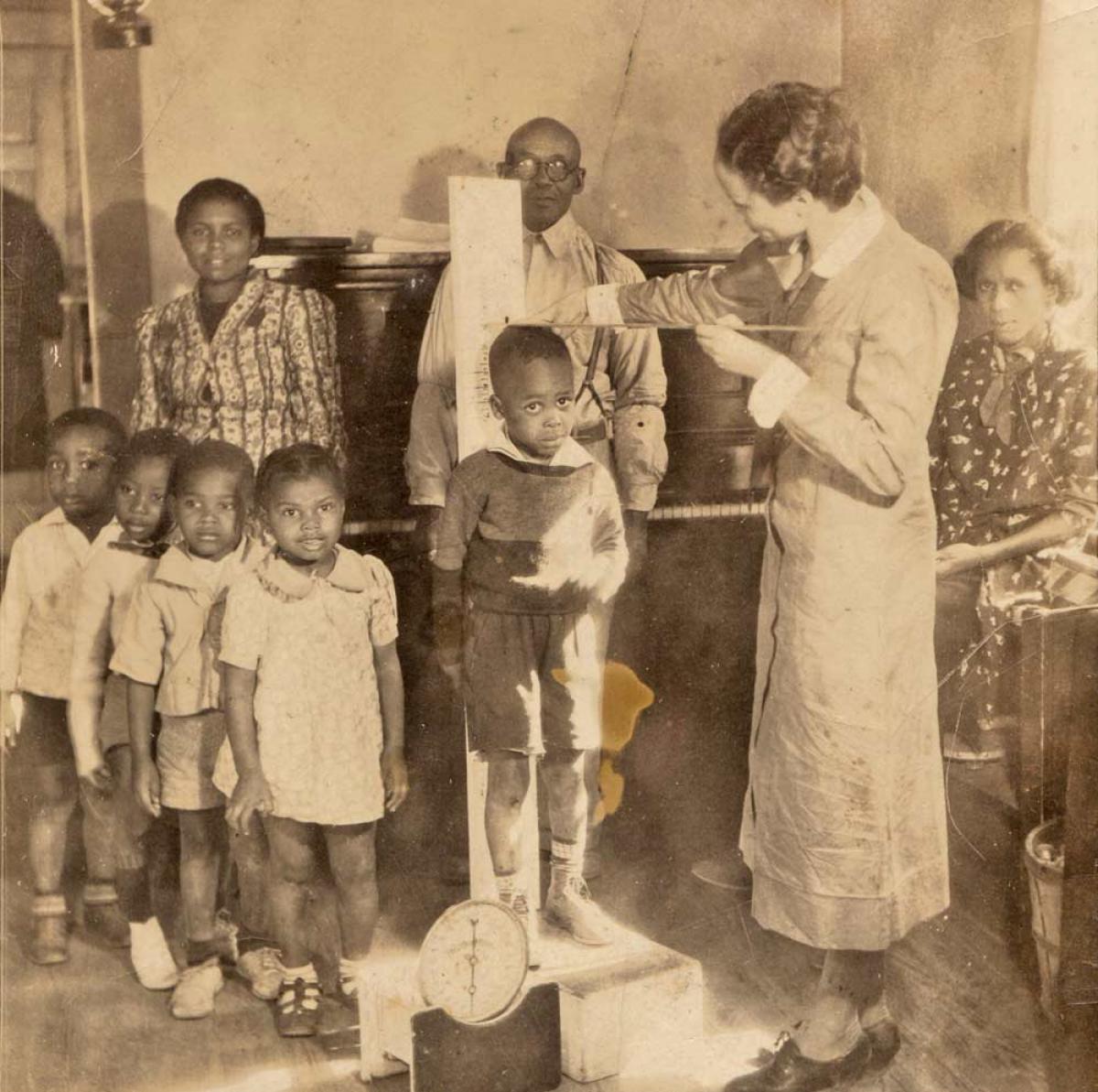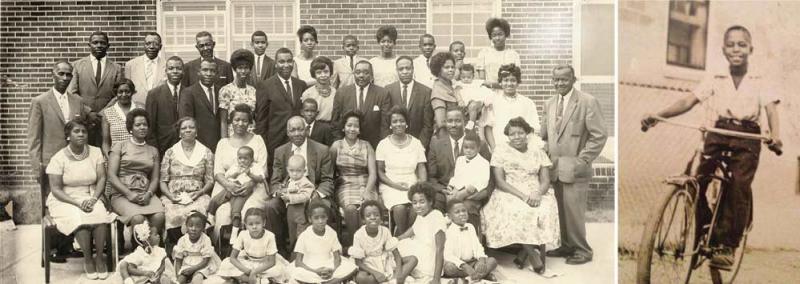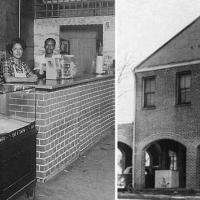The 'Bottom'

Known as “the Bottom” in its earliest days, when it was settled by freed slaves after the Civil War, this square mile of Decatur was the site of a thriving African-American community of homes, business, churches, and schools. In the early part of the 20th century, the area became known as “Beacon Hill” or just “Beacon.”
Like any small community, it had its own landmarks, characters, business and community leaders, and other common threads that formed a rich fabric of life.
But white Decatur largely considered the Beacon Community a blighted slum, and in the 1930s began to condemn sections of it to make way for public housing.
In the photo Nurse Ivey collects height and weight information for the children of Decatur Nursery School at the Odd Fellows Hall at the intersection of Herring and Oliver streets, early 1940s. Among the children are Jackie Lowe Simmons, William Heard, and Julius Shaw.

Left: The Bussey family gathers for a photograph, circa 1961. Right: Young Cliff Chandler on Atlanta Street. After graduating from the Herring Street School, and then Morehouse College, he taught at Trinity High School. He later became Georgia’s first African-American principal, after schools were desegregated, at Renfroe Middle School.



